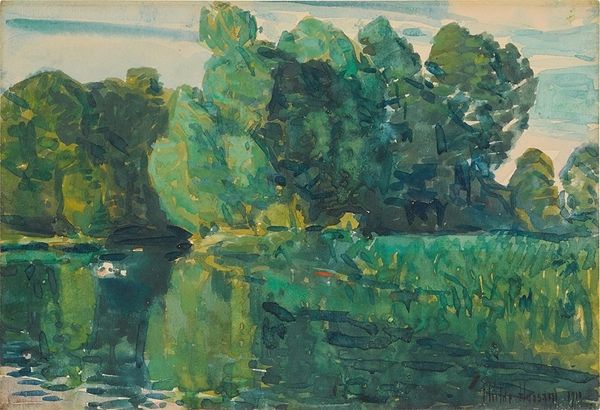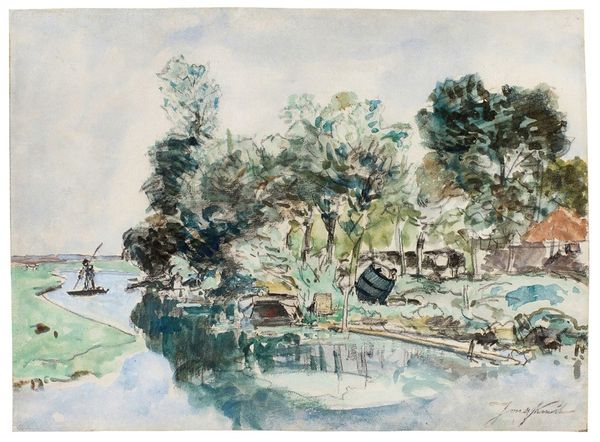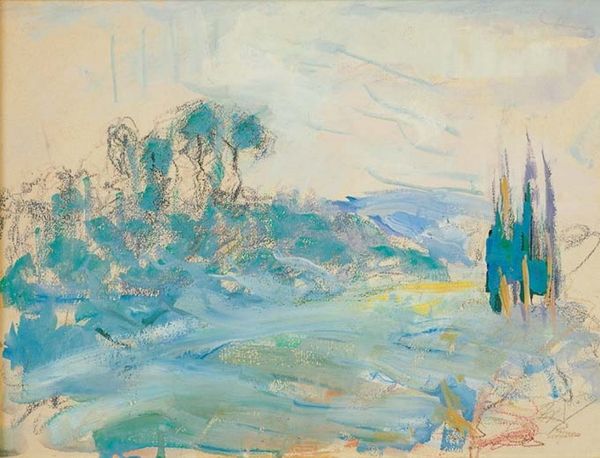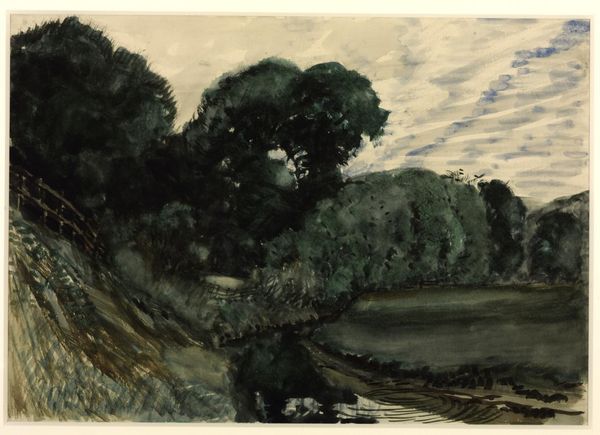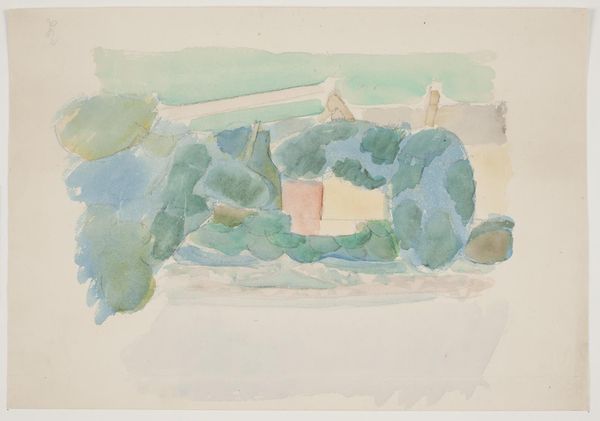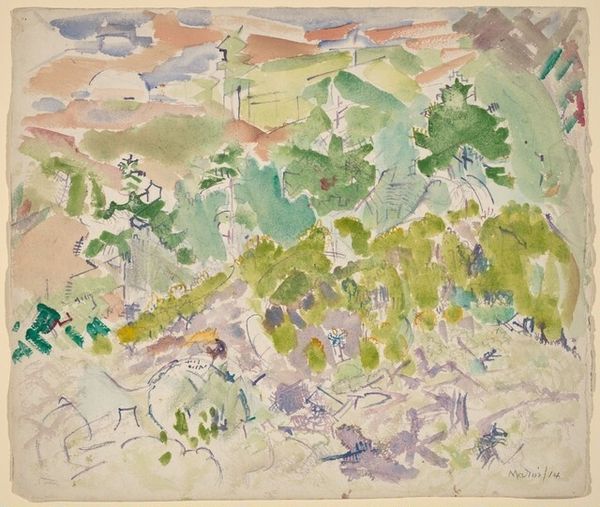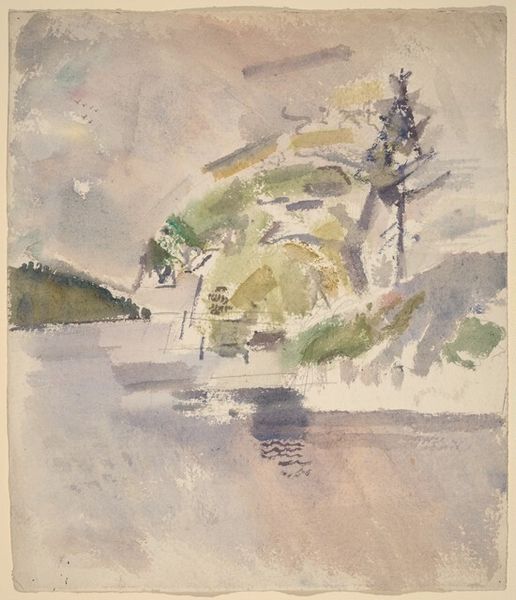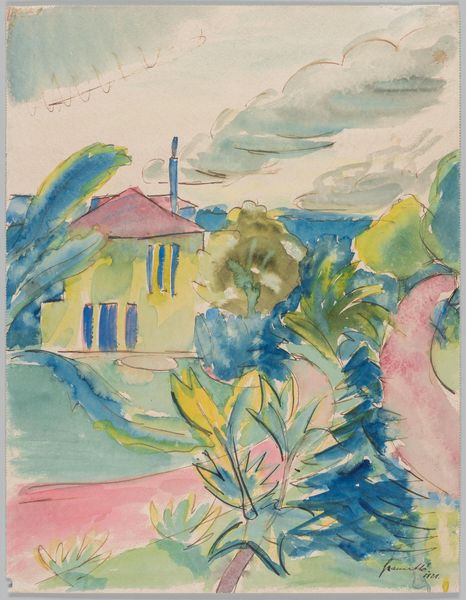
Copyright: Public Domain: Artvee
Curator: Looking at Childe Hassam’s watercolor painting, "The Bridge at Grez," circa 1904, the impression I get is something almost ephemeral. Editor: It's dreamy, isn't it? Like a memory fading in the gentle wash of blues and greens. Curator: Right. Hassam was part of the American Impressionist movement. His frequent use of plein-air, focusing on direct observation, situates the work in a network of art production linked to the outdoors and shifting light conditions. This watercolor technique becomes part of how Impressionism transformed the very act of seeing and representing landscapes. Editor: I like how the bridge feels solid and grounded in the lower half, contrasting against the blurred, almost ambiguous sky. The reflections under each arch— hints of green, rose—make it like peering through strange windows. Curator: That tension is interesting to me, too. Hassam, influenced by Art Nouveau, employed this rapid method of plein-air execution, but with what underlying purpose? Watercolors could function as preparatory works, of course, or as relatively quick works destined for sale, or both. And what type of consumer would it appeal to? Editor: It also makes me think about fleeting moments and trying to hold on to the transient nature of time through a landscape. The silhouetted figures add such mystery. Curator: From the perspective of labor and accessibility, watercolors made plein-air painting more available than, say, oil. Yet, was that democratization more illusory than actual, given how the market valorized specific artist personas and styles, rather than promoting widespread access to art production? Editor: It certainly gets me thinking about my own bridge moments - brief connections with places, faces. The beauty of watercolor almost romanticizes our everyday scenery. Curator: In revisiting “The Bridge at Grez”, I find myself focusing less on subjective perception, but more on understanding how landscapes operate culturally, economically, and materially. Editor: And I appreciate this artwork now from a deeper perspective of how technique allows it to linger within us, to be continuously reconsidered and re-seen through history and time.
Comments
No comments
Be the first to comment and join the conversation on the ultimate creative platform.
